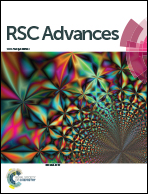A low-loss electromagnetically induced transparency (EIT) metamaterial based on coupling between electric and toroidal dipoles
Abstract
Herein, an effective approach to construct a low-loss metamaterial by incorporating an electric toroidal dipole response into electromagnetically induced transparency (EIT) effect has been proposed, which is numerically and experimentally demonstrated. The low-loss metamaterial consists of an I-type cut wire (ICW) and two spiral ring resonators (SRRs). It is numerically verified that the low-loss electric toroidal dipole resonance can be excited by rational rotation of SRR, accompanied by a circumfluent magnetic field distribution. Via subtle geometry adjustment, we realized the spectral overlap of electric and toroidal dipoles and then observed a low-loss EIT resonance based on destructive couplings between them. In addition, the effect of parametric variation for the metamaterial on EIT resonance is investigated. In particular, we have experimentally verified that low-loss EIT resonance is also obtained by altering the rotation axis of two SRRs. By scaling down our structure, our design also applies to higher frequencies. This low-loss scheme provides possibilities for the design of low-loss optical devices and highly sensitive sensors.



 Please wait while we load your content...
Please wait while we load your content...